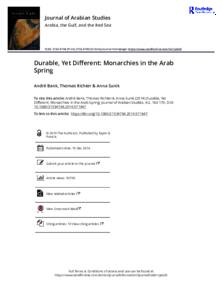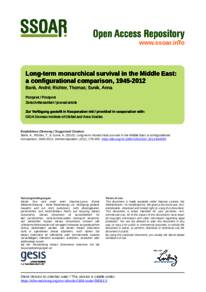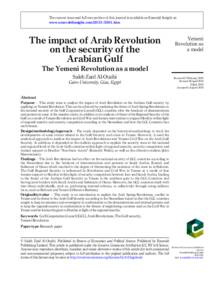Document
Durable, yet different : monarchies in the Arab spring.
Identifier
DOI: 10.1080/21534764.2014.971647
Contributors
Richter, Thomas., Author
Sunik, Anna., Author
Publisher
Taylor and Francis.
Gregorian
2014-07
Language
English
English abstract
Over three years into the Arab Spring, the Middle East is characterized by a striking difference in durability between monarchies and republics. Beyond this difference, some significant gaps within the group of the eight Middle East monarchies have so far been overlooked. Drawing on the existing monarchy research, we first make the case that there were three distinct types of durable monarchies prior to the Arab Spring. Confronted with social and political crises, each type reacted differently to the challenges presented to them after 2011. While five "rentier" and "dynastic" Gulf monarchies (Bahrain, Kuwait, Qatar, Saudi Arabia and the UAE (United Arab Emirates)) mainly rely on material distribution and family rule, the non-oil "linchpins" of Jordan and Morocco, attracting additional external funds, undertook constitutional changes in an attempt at procedural legitimation. The Sultanate of Oman, however, falls in between. This "linchtier" monarchy used modest material cooptation, a selected personal reshuffling at the top of the regime as well as targeted institutional adaptations. We illustrate our findings with similarly structured brief case studies of the three prototypes of Qatar, Jordan and Oman.
Member of
ISSN
2153-4780
Resource URL
Category
Journal articles



